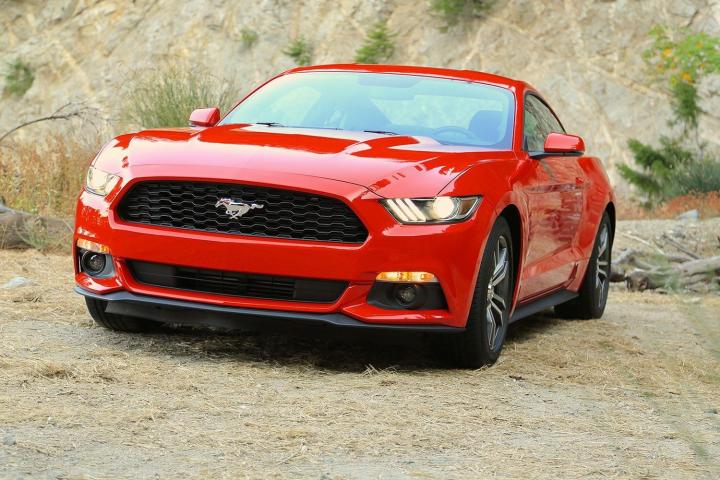
They can provide loads of power, but often at the expense of throttle response. They can also increase fuel economy compared a naturally aspirated engine of similar output, but sometimes the engine is muffled as a result.
The 2015 Mustang apparently suffers from similar issues. There’s little discernible turbo lag from the optional 2.3-liter, 310-horsepower EcoBoost engine, but the forced induction design appears to have cut back on engine noise a bit too much for Ford.
As a response, the American automaker installed a system called Active Noise Control, which cancels out coarse engine notes and layers artificial sounds over the four-cylinder’s natural voice.
Road & Track Senior Editor Jason Cammisa discovered the system after pulling fuse 27 on an EcoBoost-equipped Mustang, which caused the motor (and the stereo) to fall silent. Other than pulling the fuse, there’s no other way to disable the system as of this writing.
The system was developed through extensive clinical testing, where Mustang fan clubs whittled down different audial profiles to find the right mix. The result, however, has been disdain from muscle car fans.
Related: For real this time? Ford Focus RS could pack 350-hp EcoBoost engine and AWD
Ford isn’t the only company guilty of engine noise fabrication. BMW found the twin-turbo V8 introduced on the F10 M5 generation to be too quiet, so the brand decided to play synthetic engine sounds through the vehicle’s speakers.
The sixth-generation Volkswagen GTI became infamous for its ‘Soundaktor’ system as well, which uses a firewall-mounted speaker to generate additional sonic stimulation.
It may be a necessary evil in the eyes of Ford, but it’s sad to think that an iconic muscle car like the Mustang, a car famous for its bellowing, guttural soundtrack, has to fake its engine noise in 2015. Welcome to the future.
Editors' Recommendations
- Ford Mustang Mach-E 2024 vs. Mach-E 2023: What’s new in Ford’s electric Mustang?
- Here’s how Ford will give EV customers Tesla Supercharger access
- The Ford Mustang Mach-E isn’t just getting cheaper, it’s getting better
- The best-sounding cars
- 2021 Ford Mustang Mach-E first drive review: Electric muscle


